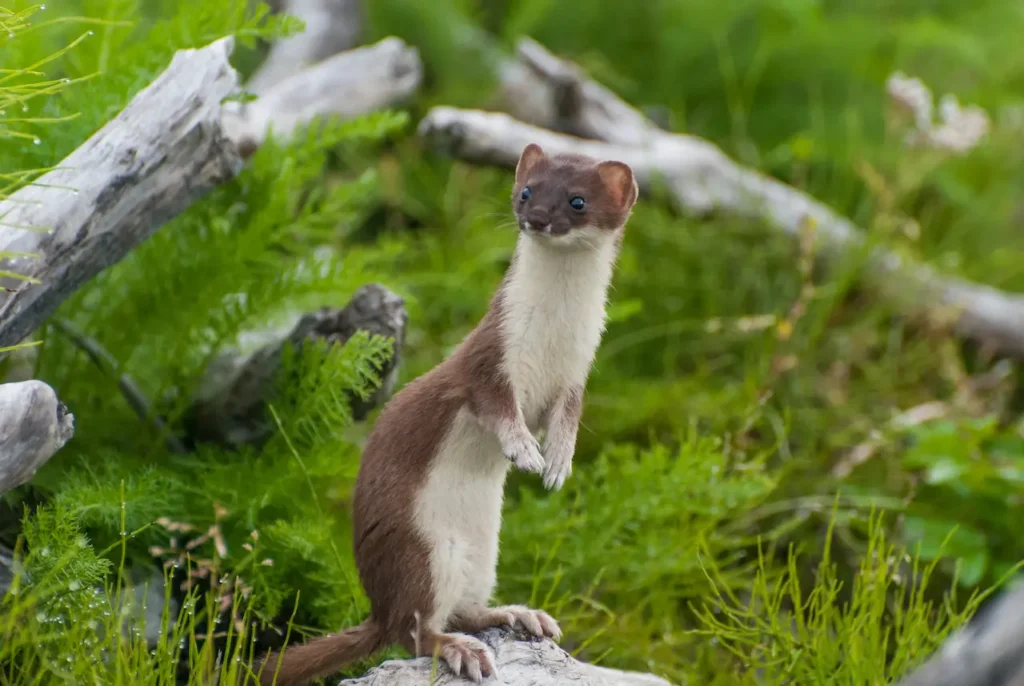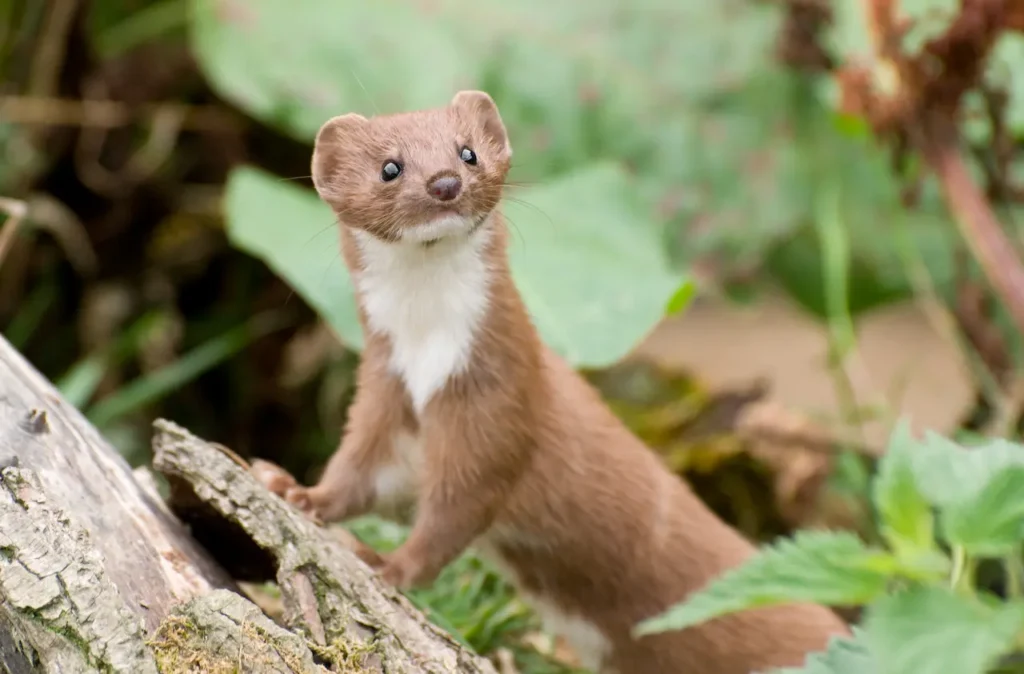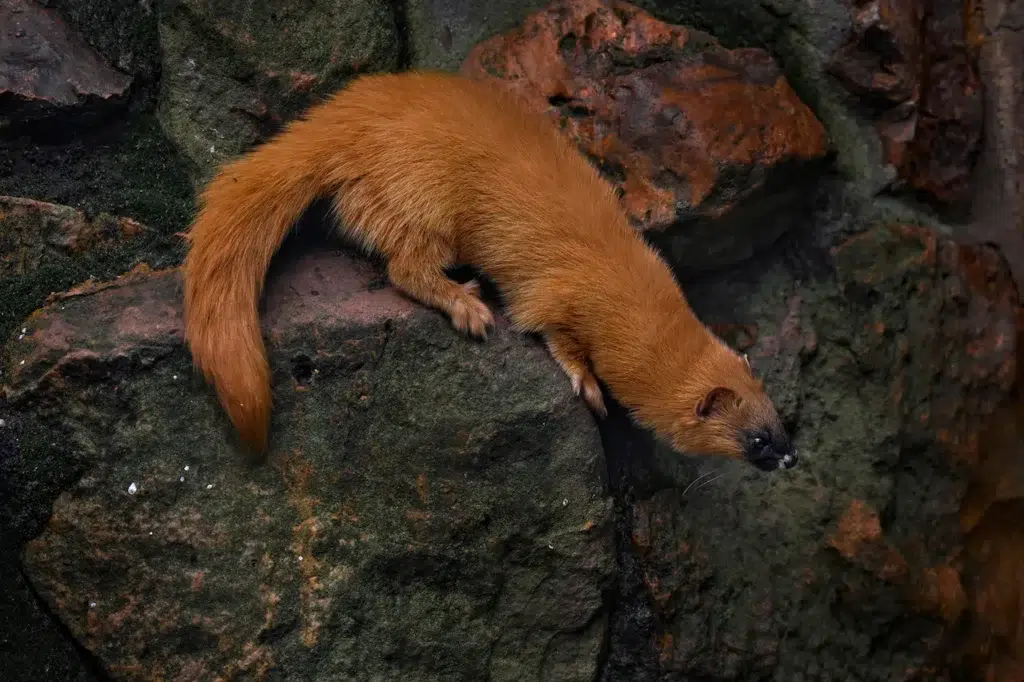What Eats Weasels?
Categories
- Accipitridae (1)
- Acrididae (1)
- Algae (2)
- Alligatoridae (1)
- Amoebidae (1)
- Amphibians (3)
- Anatidae (1)
- Anguillidae (1)
- Arachnids (2)
- Bears (2)
- Big Cats (3)
- Birds (13)
- Bovidae (5)
- Bufonidae (1)
- Camelids (1)
- Cameras (1)
- Canines (13)
- Caridea (1)
- Carnivora (10)
- Castoridae (1)
- Cats (5)
- Cebidae (1)
- Cephalopod (1)
- Cervidae (2)
- Cetacean (1)
- Chondrichthyes (1)
- Crocodilia (2)
- Crustaceans (4)
- Culicidae (1)
- Cyaneidae (1)
- Dasypodidae (1)
- Dasyurids (1)
- Deer (1)
- Delphinidae (1)
- Desktop (1)
- Didelphidae (1)
- Dinosaurs (1)
- Dogs (13)
- Dolphins (2)
- Echinoderms (1)
- Education (10)
- Elephantidae (1)
- Equine (1)
- Erethizontidae (1)
- Erinaceidae (1)
- Farming (1)
- Felidae (5)
- Fish (5)
- Food Chain (31)
- Food Web (2)
- Formicidae (1)
- Frugivore (1)
- Gaming (1)
- Gastropods (1)
- Giraffids (1)
- Great Apes (2)
- Health Conditions (3)
- Herbivore (4)
- Hi-Fi (1)
- Hippopotamidae (1)
- Hominidae (1)
- Insects (10)
- Invertebrates (2)
- Keyboards (1)
- Laptops (1)
- Leporidae (1)
- Mammals (23)
- Marsupials (4)
- Mephitidae (1)
- Microchiroptera (1)
- Mollusks (2)
- Mongoose (1)
- Muridae (1)
- Nocturnal Animals (1)
- Odobenidae (1)
- Omnivore (2)
- Phasianidae (1)
- Phocidae (1)
- Plankton (1)
- Plants (2)
- Primate (1)
- Ranidae (1)
- Reptiles (7)
- Rhinocerotidae (1)
- Rodents (5)
- Salamandridae (1)
- Scarabaeidae (1)
- Sciuridae (2)
- Sharks (1)
- Shellfish (1)
- Sound (1)
- Spheniscidae (1)
- Suidae (1)
- Superfamily Papilionoidea (1)
- Theraphosidae (1)
- What Eats (5)
Introduction
Small and sleek, weasels are agile, quick, and known for their sharp hunting skills. These are creatures known as both the fearsome predator and the nimble escape artist, skilfully navigating their environment. However, like all creatures in the wild, weasels are a part of a complex food web and are both predator and prey. In this article, we look into what weasels eat and what eats weasels and shed some light on weasel’s survival strategies and natural predators.
Table of Contents
ToggleWhat Eats Weasels?
Because weasels are small and quick, they are pretty good at avoiding threats. But with their small stature and many places to hide, they have lots of natural predators. Let’s explore six common predators of weasels:
1. Birds of Prey
Weasels are under threat from birds of prey, including hawks, eagles, and owls. These birds have great vision and very powerful talons that make snagging a small such as a weasel very easy for them. Of all, larger species of owls, like the Great Horned Owl, hunt for weasels most often at night, when weasels are most active. These birds are good hunters and can quickly swoop down to catch their prey. The weasel is difficult to escape from once caught because of their sharp claws and beaks.
2. Foxes
Omnivorous agile mammals, foxes hunt weasels when they come into their territory. Foxes are very well-smelling animals with good hearing, and the weasel is detected at a distance. Foxes have a varied diet but opportunistically prey on weasels if they are available. The general rule for most weasels is to avoid foxes by quick movement and the ability to squeeze into small places, but a persistent fox can sometimes catch a weasel, especially a young or inexperienced one.
3. Coyotes
Carnivorous predators that are larger are found all over North America and are called coyotes. Coyotes are larger and faster, hunt better, and can feed on weasels. Coyotes are versatile hunters and will chase their prey a long distance until the prey is exhausted. Although weasels are agile animals, they may have trouble escaping a determined coyote, especially in open areas where hiding is not easy. Coyotes are not picky eaters and will not pass up the chance to capture and eat a weasel.
4. Snakes
Some habitats have snakes that are notable predators of weasels. Pythons, boa constrictors, and some venomous snakes are larger species that will take weasels if they get the chance. Usually, these snakes lie in wait, camouflaged, and strike suddenly out of the blue to catch the weasel off guard. But once a snake coils around its prey or injects venom, the weasel has nothing to fight back with and becomes an easy meal. When weasels have to move through tall ground cover or through rocky areas where there may be snakes hiding, they have to be careful.
5. Wolves
While wolves are generally larger and hunt larger prey, they will not pass up the opportunity to kill a weasel if it comes their way. Wolves are formidable hunters and usually hunt in packs, capable of bringing down large animals. But a weasel might be found by lone wolves or a small pack in their search for food. The wolf has an advantage in that it is faster, stronger, and has a better sense of smell than the weasel, and in open areas, the smaller animal has no place to hide.
6. Domestic Cats and Dogs
Domestic cats and dogs may become accidental predators in areas where weasels live near human habitations. As natural hunters, cats may chase and catch weasels just for sport or for food. Even dogs with a strong prey drive would chase the weasel if they spotted one. Weasels stand a fighting chance against smaller pets, but larger cats and dogs can overwhelm them. In some rural areas, farmers encourage their dogs to hunt weasels in order to prevent predation of their poultry or small livestock.
What Do Weasels Eat?
Weasels, as skilled hunters, eat various things, mostly small mammals, birds, and insects. They are effective predators because of their sharp teeth, quick reflexes, and cunning. Here are six key prey that make up the diet of a weasel:
1. Rodents
Weasels are fed on rodents. Weasels’ main small mammal prey are mice, voles, rats, and shrews. Weasels are slender, elongated creatures that make it easy to track these small creatures down into their burrows and tight hiding places. After catching its prey, the weasel applies a sharp bite to the back of the neck of the rodent, which kills it almost instantly. Weasels are able to eat rodents, as they are high in protein and energy and will give weasels enough energy and protein to chase their lives around.
2. Birds and Eggs
Adult birds and their eggs are in danger of being raided by weasels from bird nests. Good climbers they can climb to nests in trees or tall shrubs. When on the ground or perched low, they will take advantage of smaller birds, such as sparrows, finches, and quail. Opportunistic egg hunters and weasels will also search out a nest, steal away, and consume eggs whenever they get the chance. Eggs are a high-quality, easy-to-get, nutritionally dense food source that weasels need to maintain a high metabolism.
3. Rabbits and Hares
Although larger than most of their usual prey, weasels do hunt young rabbits and hares. The agility of these creatures, in particular, means they are able to catch these animals when they are young or sick and take down prey far larger than themselves. The weasel usually approaches a rabbit or hare in stealth and then pounces in a quick attack. Rabbits and hares are present in a wide variety of habitats, from grasslands to forests, so they are an important part of a weasel’s diet.
4. Insects
Insects make up a significant portion of weasels’ diet — especially when other prey is hard to find — but they don’t just feast on mammals and birds. A variety of insects – beetles, crickets, grasshoppers, and even caterpillars – are consumed. Insects are an important food in warmer months when they’re more plentiful. Insects may not be as full of energy as mammals or birds, but they’re something of a snack that can reach for when they need a little extra throughout the day.
5. Amphibians and Reptiles
Weasels sometimes eat frogs and newts, as well as small reptiles, including lizards and young snakes. The fact is amphibians are easy targets for weasels, and this is more so in wetland areas or areas around water bodies where there are many of them. Reptiles, such as lizards, are also known to be a form of prey when they’re basking in the sun or hiding in thick foliage. As weasels are quick and persistent hunters, these small creatures can easily be caught by them and provide high protein for them.
6. Fish and Small Aquatic Creatures
Weasels are not their primary food source, but will hunt fish and other small aquatic creatures and do so in areas near rivers, ponds, or marshes. They are able to catch small fish or aquatic insects like dragonfly nymphs as a result of their swimming abilities. In times when food on land is scarce, hunting aquatic prey is a common practice, indicating the flexibility of weasels in adapting to different environments and having the ability to diversify their diet depending on what is available.
Conclusion
As predator and prey, weasels have intriguingly dual roles in the food chain. As such, they have lots of predators, including birds of prey, foxes, coyotes, and even domestic cats and dogs. However, weasels are also very good hunters, eating foods such as rodents, birds, eggs, rabbits, insects, and even small aquatic creatures.
It is how agile, clever, and able to orientate itself in a very diverse, often hostile environment it survives. Knowing what eats weasels and what weasels eat provides bigger perspectives on their place in the wild and the nature of predator-prey relationships.



